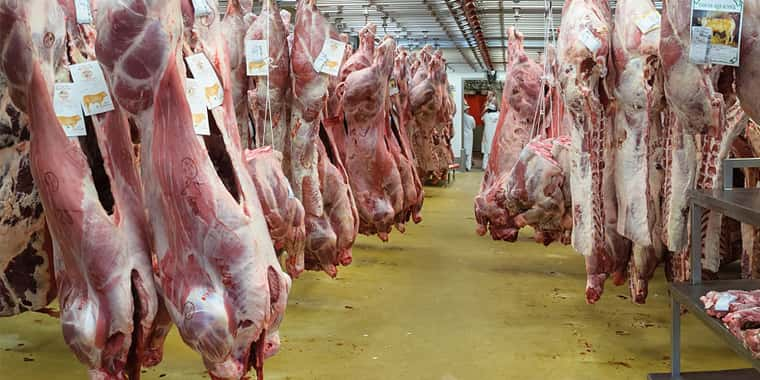Meat processing companies and union officials tell Reuters that rising COVID-19 infections among workers are once again forcing meat plants to slow production and the government to replace slaughter inspectors.
Meatpacking was an early epicenter of COVID in 2020 and is now the latest sector to be disrupted by the Omicron variant. Cargill, one of the country’s top beef producers, operated a few of its plants at a lower slaughter capacity last week. A Cargill plant in Dodge City, Kansas, was reportedly getting by with a skeleton crew at one point.
Reduced slaughter capacity utilization in turn reduces available beef supplies despite booming demand for beef, both in the U.S. and abroad. Producers are also forced to keep cattle on feed longer, which increases harvest weights. U.S. retail beef prices have been at or near record levels for months and if the processing reductions continue it could fuel more inflation and further increase beef prices.
USDA estimates beef processors killed 112,000 head of cattle last Friday, down six percent from 2021 and matching January third levels that were the lowest since October.
USDA meatpacking inspectors are also increasingly testing positive, causing the ag department to shift inspectors to different plants to allow them to continue operating due to staff shortages.
It’s a situation that cattle producers are all too familiar with after seeing plants reduce capacity or shutdown in the spring of 2020. That created a backlog in feedyards that lasted for nearly a year and the ramifications of which are still being felt in today’s market.
The reduction in cattle harvest numbers also seemed to affect the fed cattle market. As negotiated cash trade volumes were curbed significantly in the first week of the year. Just under 39,000 head of cattle were sold on the cash market last week, down 46 percent from the week prior and 41 percent lower than year ago levels. Cash fed cattle traded largely from $138 to $140.
Overall, there is a lot of optimism for the cattle market in 2022 as strong beef demand combines with decreasing cattle supplies, accelerated by the drought, to push prices high. New and expanded beef processing capacity is expected to come online as the year wears on. Without significant disruptions, analysts say the fed cattle market could push over the $150 mark this year.
###
NAFB/Northern Ag Network/USDA


